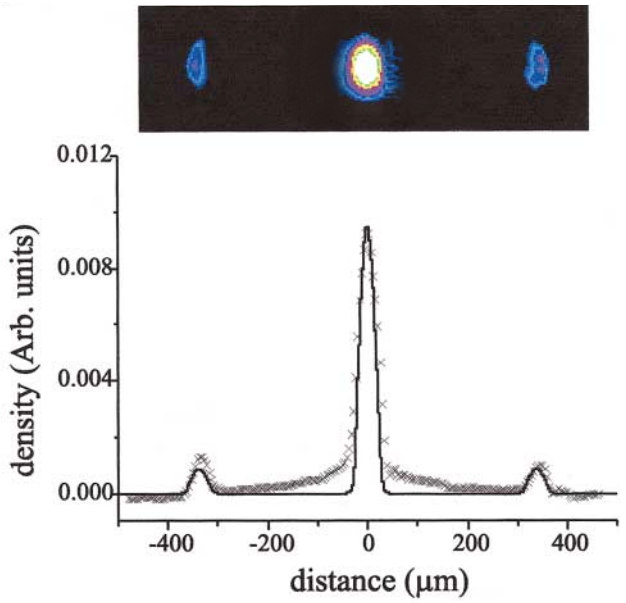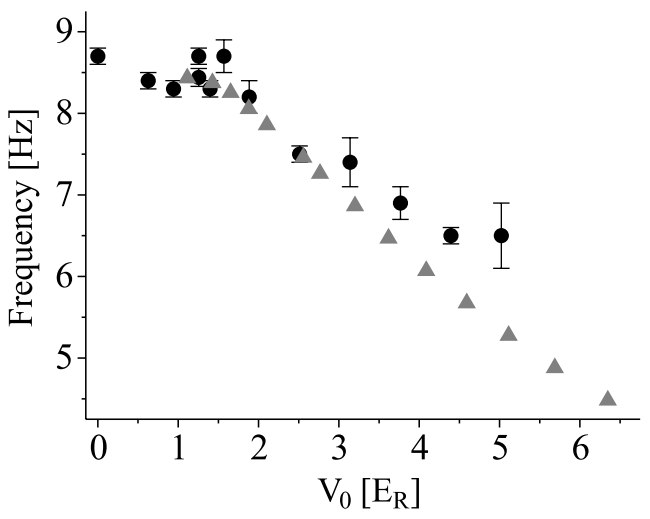 |
We have experimentally studied the unstable dynamics of a harmonically trapped Bose-Einstein condensate loaded into a 1D moving optical lattice. The lifetime of the condensate in such a potential exhibits a dramatic dependence on the quasimomentum state. This is unambiguously attributed to the onset of dynamical instability, after a comparison with the predictions of the Gross-Pitaevskii theory. Deeply in the unstable region we observe the rapid appearance of complex structures in the atomic density profile, as a consequence of the condensate phase uniformity breakdown. L. Fallani et al. |
LAST NEWS
 |
We report the experimental observation of a lensing effect on a Bose-Einstein condensate expanding in a moving 1D optical lattice. The effect of the periodic potential can be described by an effective mass dependent on the condensate quasimomentum. By changing the velocity of the atoms in the frame of the optical lattice, we induce a focusing of the condensate along the lattice direction. The experimental results are compared with the numerical predictions of an effective 1D theoretical model. In addition, a precise band spectroscopy of the system is carried out by looking at the real-space propagation of the atomic wave packet in the optical lattice. L. Fallani et al. |
 |
We investigate the properties of a coherent array containing about 200 Bose-Einstein condensates produced in a far detuned 1D optical lattice. The density profile of the gas, imaged after releasing the trap, provides information about the coherence of the ground-state wave function. The measured atomic distribution is characterized by interference peaks. The time evolution of the peaks, their relative population, as well as the radial size of the expanding cloud are in good agreement with the predictions of theory. P. Pedri et al. |
 |
We report on the direct observation of an oscillating atomic current in a one-dimensional array of Josephson junctions realized with an atomic Bose-Einstein condensate. The array is created by a laser standing wave, with the condensates trapped in the valleys of the periodic potential and weakly coupled by the interwell barriers. The coherence of multiple tunneling between adjacent wells is continuously probed by atomic interference. The square of the small-amplitude oscillation frequency is proportional to the microscopic tunneling rate of each condensate through the barriers and provides a direct measurement of the Josephson critical current as a function of the intermediate barrier heights. F. S. Cataliotti et al. |
